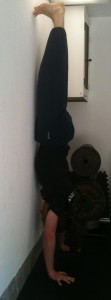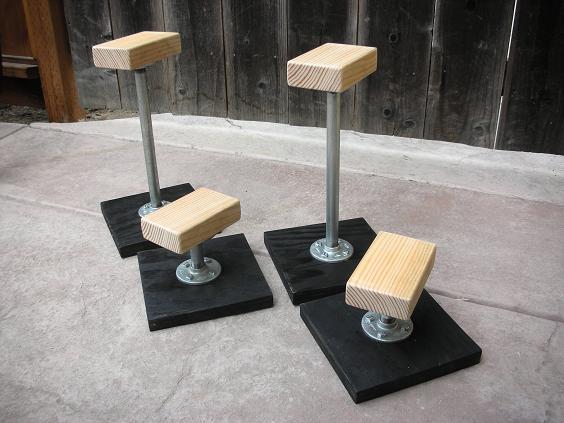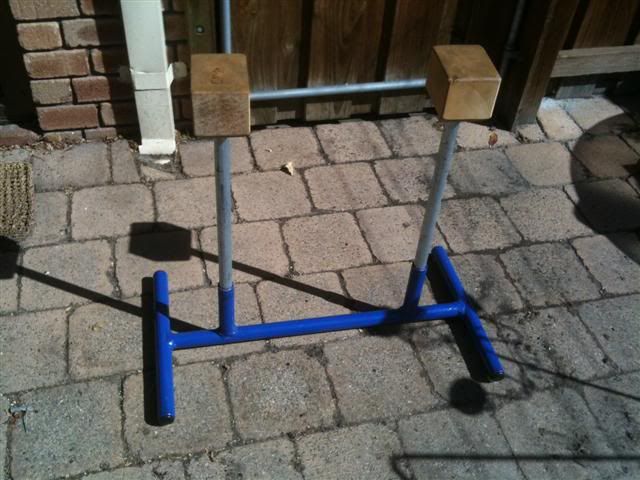How do you deal with a handstand blood rush? I’m referring to when blood rushes into your head while doing any handstand movements.
This happens because of gravity. In an inversion you’re reversing the flow. While some people suffer more from this effect then others, there are a number of things you can do.
#1
Make sure you aren’t holding your breath. This is a natural tendency when people first start doing handstands. This will contribute to the problem and you can even burst some blood vessels in your face if you do it. Learn to breathe naturally.
#2
Use headstands for longer periods of time to get use to it. The headstand is the same as far as inversion and gravity flow is with the handstand but is much easier to hold. You can use to position especially to get use to being upside down. Another option would be hanging from the yoga trapeze.
#3
Build up the amount of handstand practice you do over time to acclimate to it. As your body becomes use to being upside down you won’t feel the same pressure inside your head. Be patient with it. Some people certainly get it worse then others, but everyone can get over it in time.
This isn’t a harmful thing (with the exception of possibly bursting some blood vessels, but that won’t even cause permanent damage). Just follow these steps and you won’t even remember the handstand blood rush in no time.












